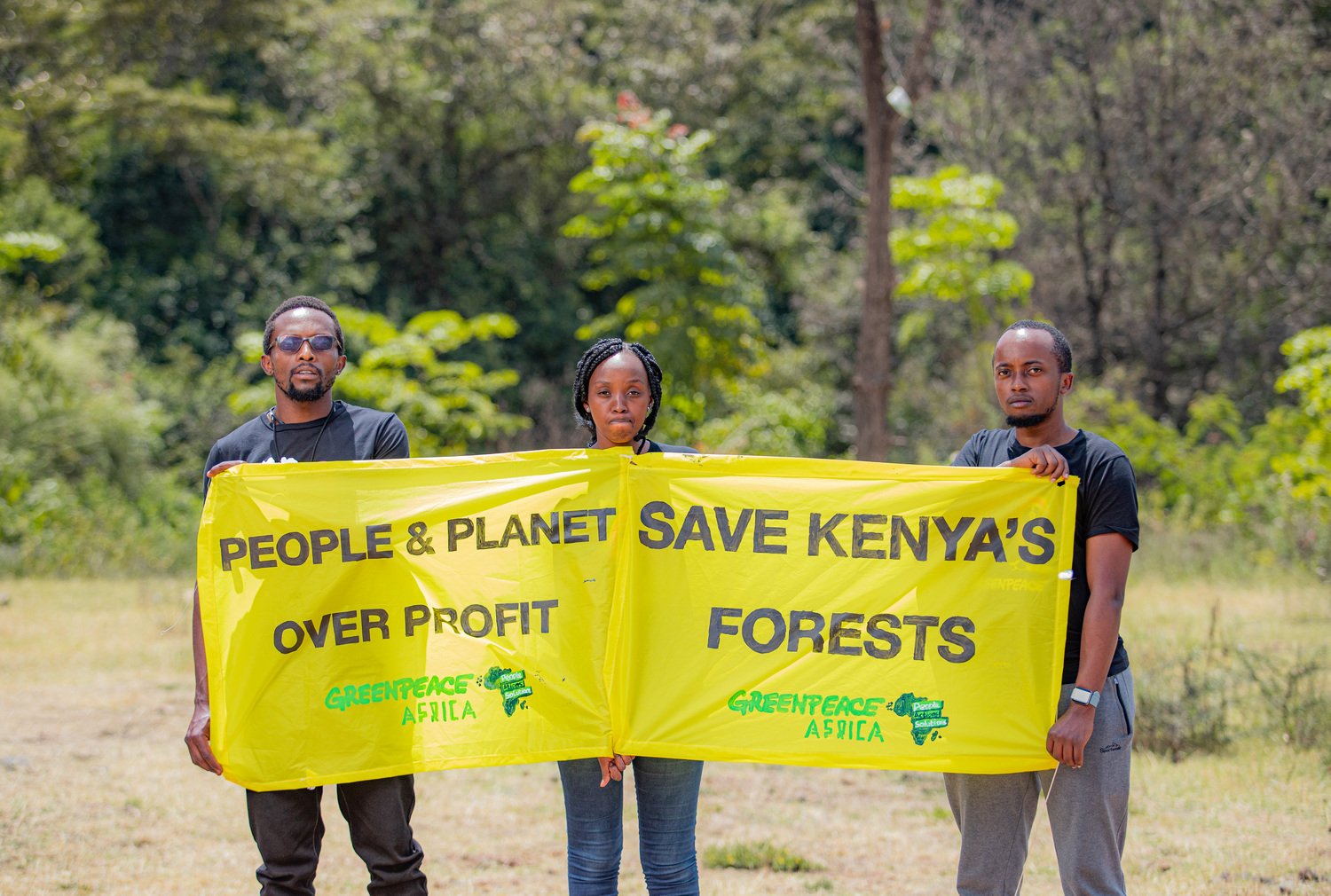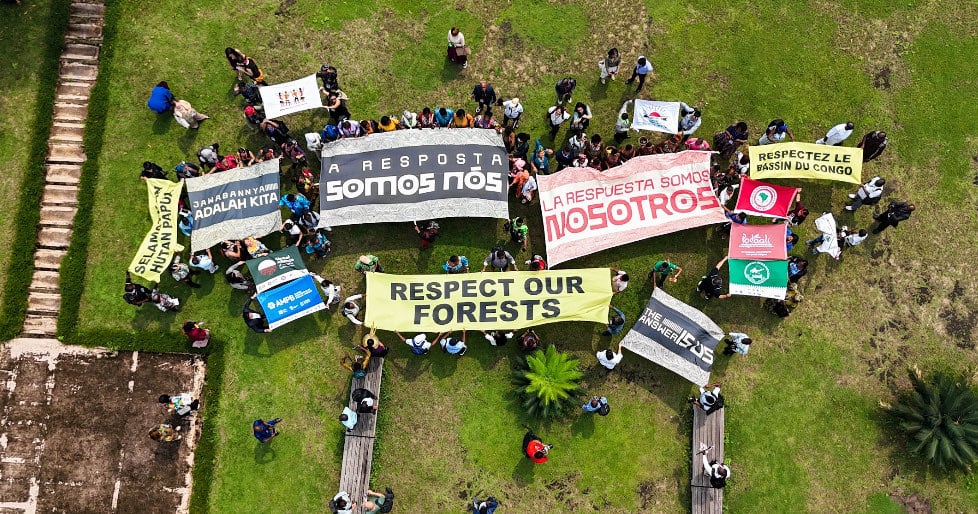I could hear the early morning birds churning melodies from giant trees as we made our way, single-file, down the muddy footpath deep into the equatorial rainforest of Lokolama in DR Congo. We could see, but not feel, the warmth of the sun, shaded under the thick canopy of trees; an ideal environment for mosquitoes and other forest insects to torture us for their breakfast.
I wanted to witness, firsthand the scientific discovery of the largest tropical peatlands. Protecting the Congo Basin forest and standing with local and indigenous people is paramount to our identity as environmentalists at Greenpeace Africa. Tragically, this iconic forest is disappearing at an alarming rate, because of the activities of industrial logging and agriculture. The effects on the environment and on local and indigenous people are nothing short of ruinous.
The term ‘indigenous peoples’ is generally used to refer to nomadic hunter-gatherers, including the Batwa in the Great Lakes Region, the Mbendjele – Aka in northern Congo and southern CAR, and the Baka in south-eastern Cameroon, north-eastern Congo and north-western Gabon. Europeans in the 1800s started referring to these people as “pygmies,” a denigrating term that has proven to be difficult to shake.
In Cameroon, indigenous communities are recognized as the first inhabitants of the forest areas and are divided into three large ethnic groups: the Baka, Bagyeli and Bedzang people. The Baka, the most numerous, are located in the South and East Regions of the country and they rely on their immediate environment – the forest – for their livelihood. Just like their counterparts in DR Congo who are under attack from industrial loggers, the indigenous people in Cameroon are under attack from industrial agriculturalist.
To be confronted with the pain of these peoples’ collective experience at the hands of big industries is crippling. They are displaced without adequate compensation and their cultural heritage that depends heavily on the forest might soon become little more than history. These local and indigenous communities often do not have the right to Free Prior and Informed Consent and adequate compensation before their forest is exploited. Industrial exploitation often limits their water catchment sources and threatens their food channels and limits access to medical herbs for the people.
Some light breaks through the canopy above us on the footpath; and the light is more than literal, too. Indigenous people are standing up for their rights in the DRC and Cameroon. In the latter, Greenpeace Africa joins the indigenous people of Lokolama to celebrate the regional government approval of a community forestry concession in the region. This gives the people the right to sustainably manage and protect their forest resources.
In Mintom, Cameroon, the just-ended Baka cultural festival has given environmentalists an opportunity to pause and take stock. We have forced Sudcam and Halcyon Agri to implement a temporary stop to deforestation in the South of Cameroon. Public pressure from Greenpeace Africa also pushed the Norwegian Pension Fund to divest from Halcyon Agri; an immense environmental victory. Halcyon Agri and Sudcam have also been pressured to set up a Sustainability Council to address the many problems affecting communities in South Cameroon.
Our forest is not an exploitation opportunity, and the battle against the foreign multinationals who believe it is will be long-fought. We shall continue to hold our posts as environmental protectors and defenders of people, embodiments of Africa’s cultural diversity, who live closer to nature.



